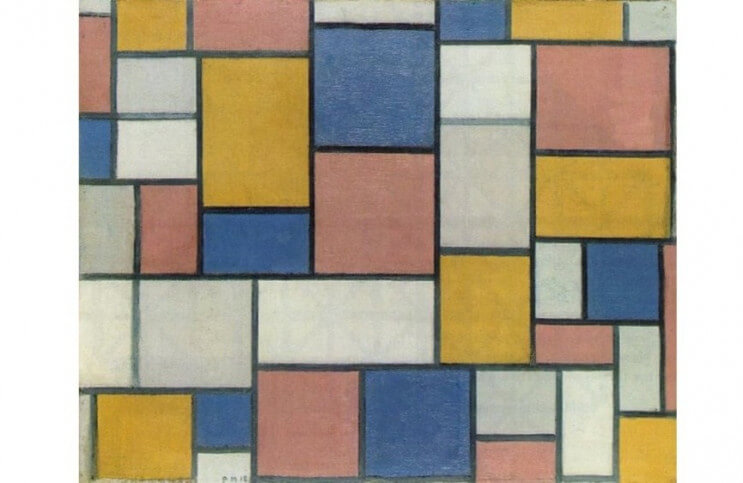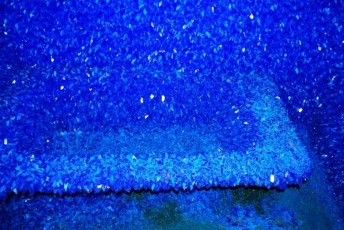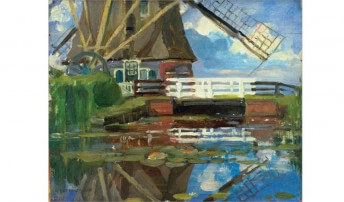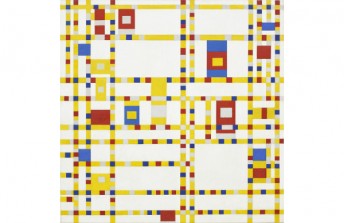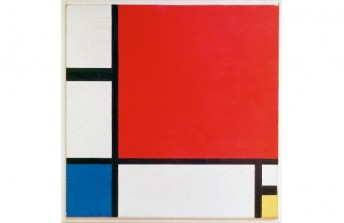The Theory of Neoplasticism - Reducing the Art to Pure Components
May 10, 2016
The artist Theo van Doesburg once wrote, “The white canvas is almost solemn. Each superfluous line, each wrongly placed line, any color placed without veneration or care, can spoil everything.” In 1917 Doesburg founded De Stijl, a magazine that became synonymous with Neoplasticism, an emerging art movement it venerated. At that time people referred to painting and sculpture as the “plastic arts” to distinguish them from written art forms like music and literature. The term plastic referred not to the material, though plastic has existed since at least 1907. Rather it referred to plasticity, the condition of stuff that can be formed into other stuff. The term Neoplasticism, coined by an artist named Piet Mondrian, was a rejection of the plasticity of the past. It was a word intended to mean, “New Art.”
The Birth of Neoplasticism
Art historians credit Wassily Kandinsky with the first purely abstract painting , which he painted in 1910. The question Kandinsky and many other artists at the time were struggling to answer was whether to paint the world as it looked to their human eyes, or to try to achieve something more sublime, more universal, and more pure through abstraction. Kandinsky embraced abstraction as a way to express the depths of his spirit. His abstract paintings contained a tremendous range of colors, lines and abstracted forms composed in ways that bear no resemblance to the objectively visible world.
When Piet Mondrian coined Neoplasticism, he was already a fan of Kandinsky’s writing, and he also believed in abstraction’s potential to communicate the spiritual and the sublime. But, he disagreed with Kandinsky about the range of elements an abstract painter should use. He felt that the new art should be one of limitations, paring down the visual language so as to only express what is most essential.
Mondrian’s earliest attempts to express Neoplasticism in his paintings manifested as collections of colored squares and rectangles arranged on a white field. The image surface was completely flattened and no area of the canvas could be considered the focal point. The squares and rectangle represented to him the ultimate essence of abstracted form, but the range of colors he was using still seemed to him too complex, and the hues still too impure. He began to reduce his palette and purify the hues and he also added black lines.
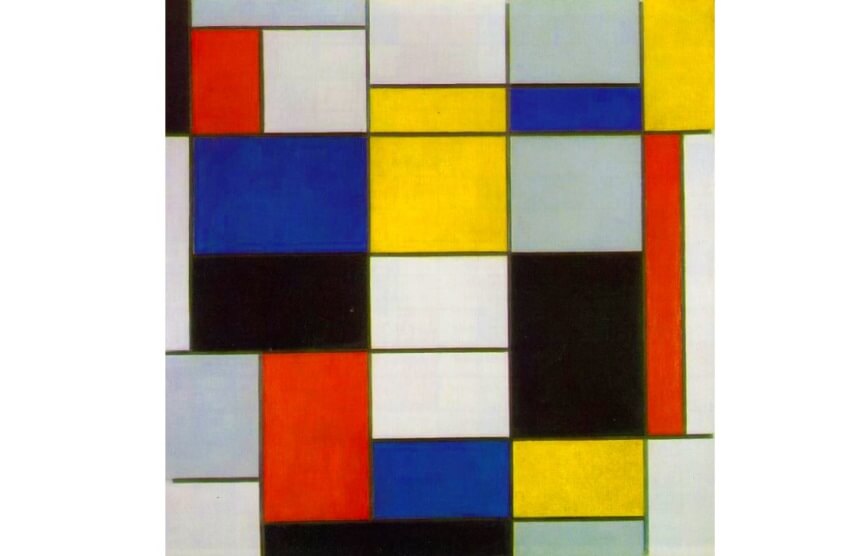
Piet Mondrian - Large Composition A with Black, Red, Gray, Yellow and Blue, 1920, Oil on canvas, 91 x 91 cm. Courtesy of www.Piet-Mondrian.org
As Neoplasticists honed in on their efforts to express a perfectly harmonious abstract concept, Mondrian arrived at what he finally felt was a true expression of his thoughts. He had further distilled his visual language. He extended the black lines, using them to form a grid in support of the colored forms. And he reduced his palette purely to primary colors, writing, “As a pure representation of the human mind, art will express itself in an aesthetically purified, that is to say, abstract form…this new plastic idea will ignore the particulars of appearance, that is to say, natural form and colour. On the contrary it should find its expression in the abstraction of form and colour, that is to say, in the straight line and the clearly defined primary colour.”
By 1920, Mondrian had arrived at what would become known as the iconic aesthetic of Neoplasticism. The style incorporated only pure primary red, blue, yellow, gray, black and white, contained within a pure black lined grid on a pure white background. Mondrian himself, as well as the other painters involved in Neoplasticism, as well as designers and architects, would continue to copy and expand upon this style, using it to create unique abstract geometric compositions to be used on houses, in fashion and in advertising as well as fine art. The look of Neoplasticism influenced the Bauhaus artists, inspired Constructivism, and even affected artists generations later who were associated with Minimalism.
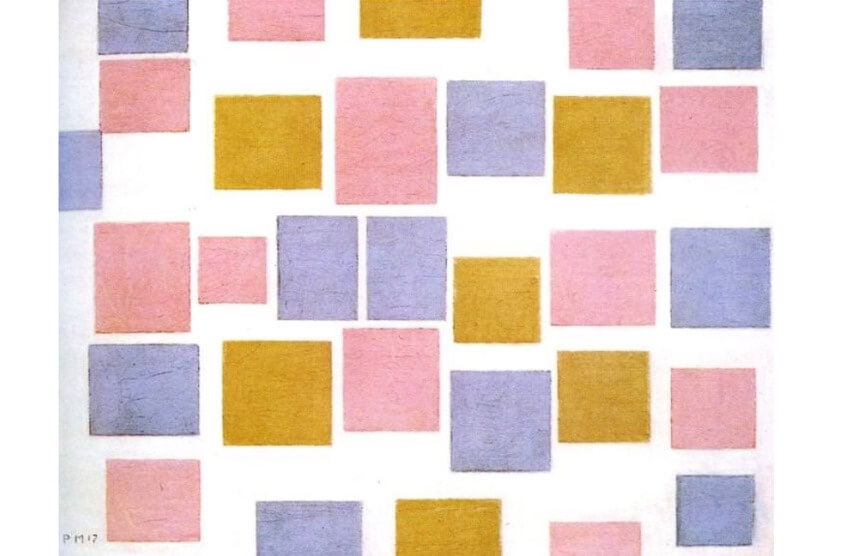
Piet Mondrian - Composition with Color Planes, 1917, Oil on canvas, 48 x 61 cm. Courtesy of www.Piet-Mondrian.org
The Marriage of Neoplasticism and Abstraction
The essence of Neoplasticism was found in its idealism: a pure representation of the human mind. The clearly defined rationale of the style demanded that its paintings could only be abstract. The representational world was chaotic and impure. Harmony could only be found in simplification, paring down, and abstracting the fundamental building blocks of the aesthetic experience. While it may seem like Neoplasticism placed a burden of extreme limitations on artists, those limitations in fact allowed for a tremendous range of expression.
Rather than exploring the limitless details of the material world, Neoplasticism was devised to explore the most essential inner dimensions of the human experience. It dealt not with trees and hills and human forms, but with concepts such as space, movement, order and patterns. The style was a pure expression of the physical universe according to its simplest functions, and abstracted to its most basic state.

Piet Mondrian - Composition in Colour B, 1917, Oil on canvas. Kröller-Müller Museum, Otterlo. © 2018 Mondrian/Holtzman Trust c/o HCR International
Simplify
The years just prior to the rise of Neoplasticism had seen the emergence of a series of artistic tendencies that complicated the visual aesthetic of painting. The Cubists sought to express the objective world in four dimensions. The Futurists attempted to express the speed and fantastical nature of the chaotic, mechanized world. The Dadaists endeavored to mock, confuse and destroy the entire art world, developing a particularly chaotic aesthetic with their absurdist collages. And Art Deco had introduced a cluttered, overly decorative aesthetic to architecture and design.
Seen in context, the art world was in need of a return both to simplification, and to earnestness after the cynicism of Dada and the destruction and chaos of World War I. Building on the work of the Orphists, who had gracefully expressed the power of color, and the other abstract artists who were diligently exploring ways to express non-representational form and the power of line, Neoplasticism was perhaps inevitable as the perfect culmination of all of these ideas. In its earnest search for simplicity and purity it achieved an expression of the most basic elements of existence, and did so in an honest, austere, innovative and harmonious way.
Featured Image: Piet Mondrian - Composition with Color Planes and Gray Lines 1, 1918, Oil on canvas, 49 x 60.5 cm. Private collection
All images © Piet Mondrian, all images used for illustrative purposes only
By Phillip Barcio
